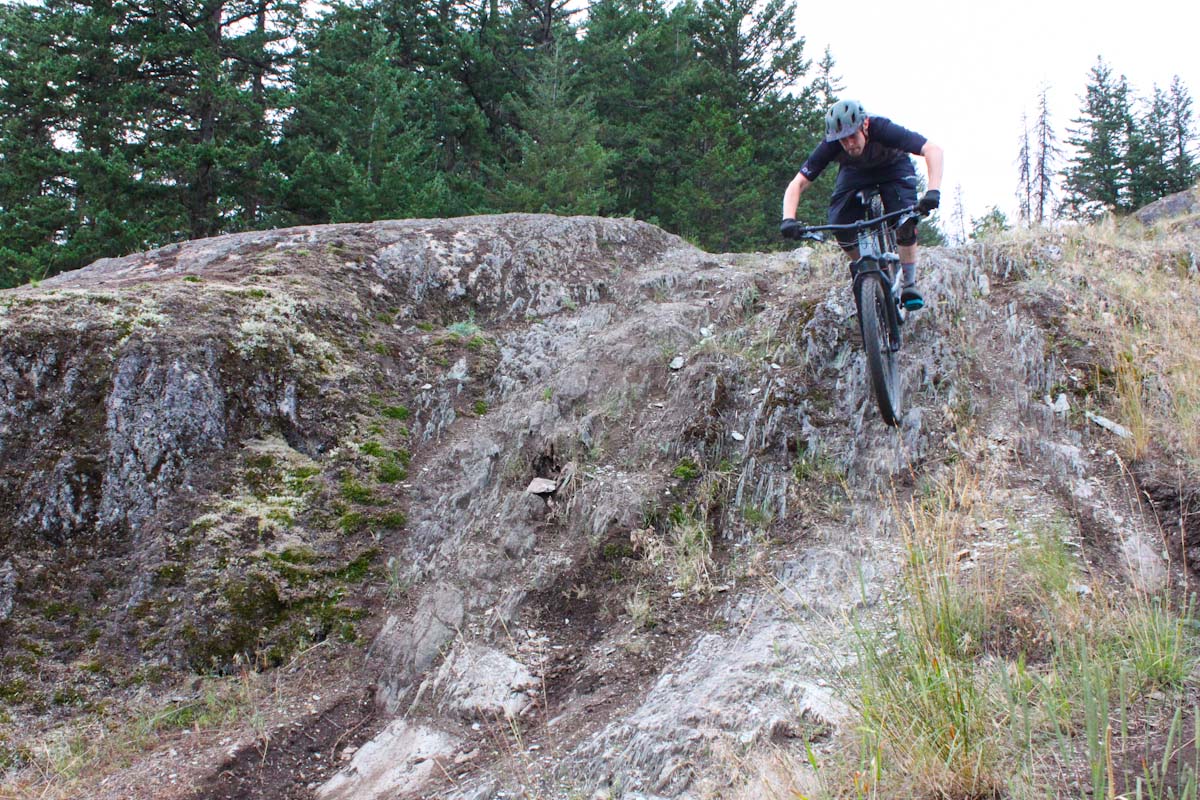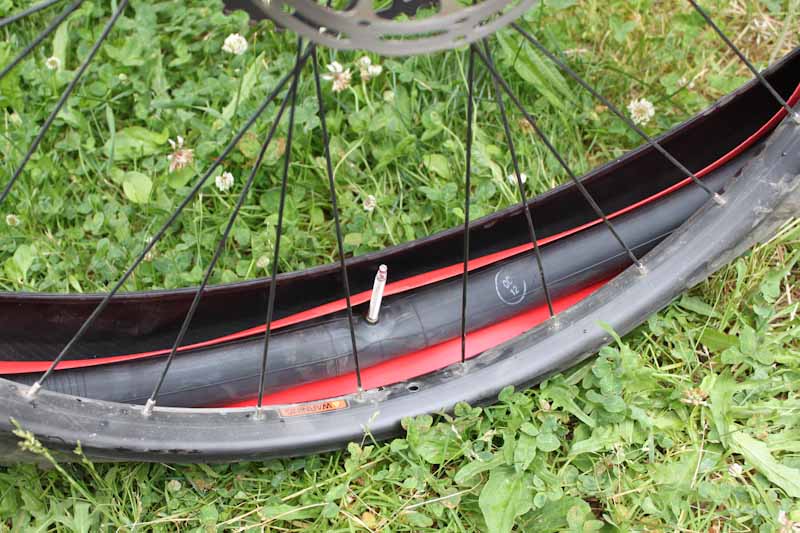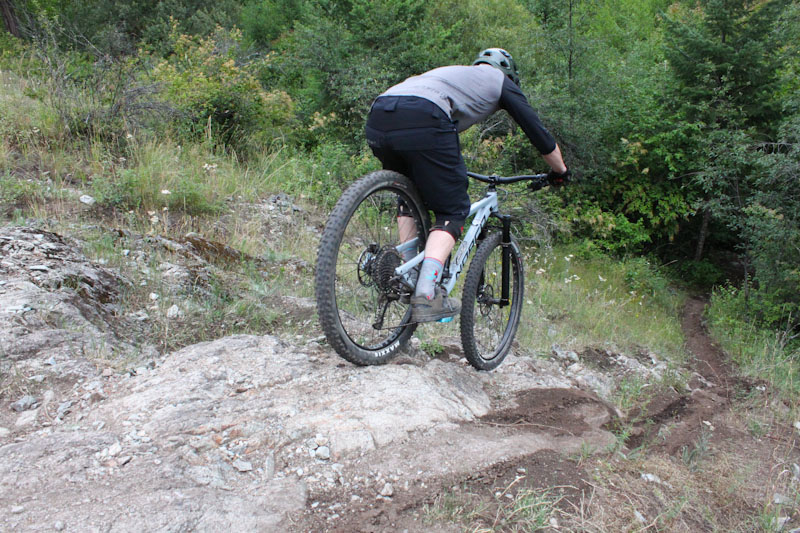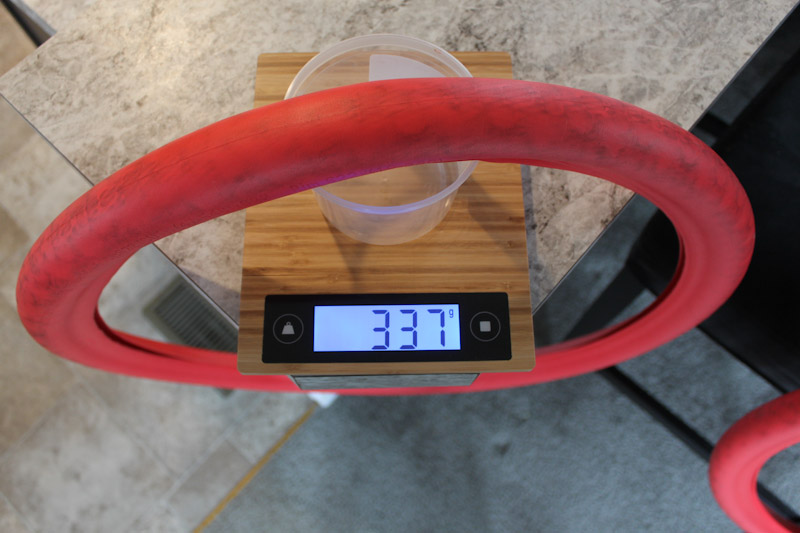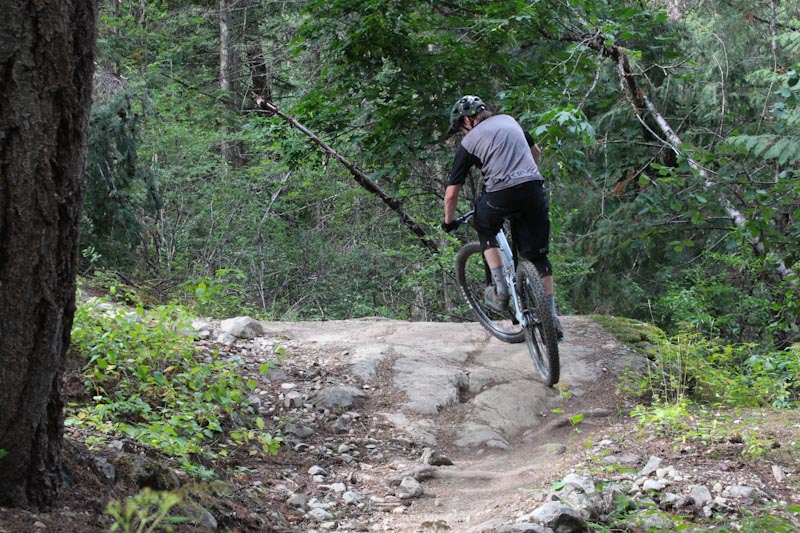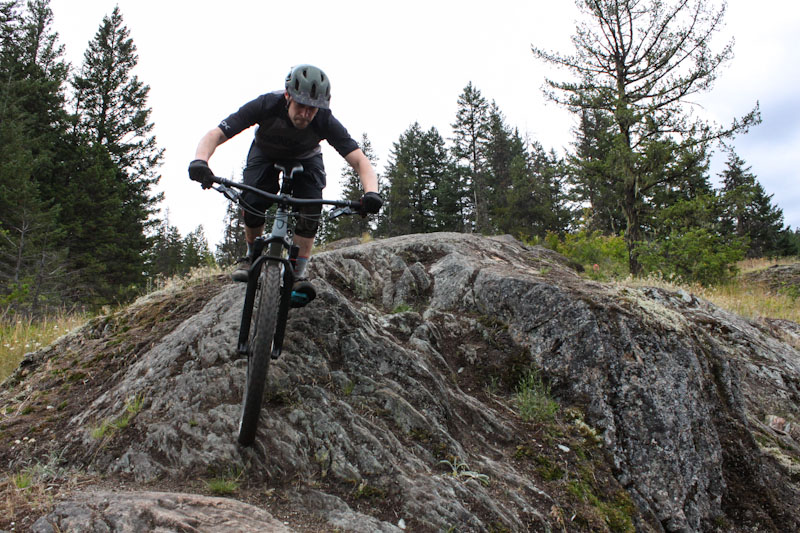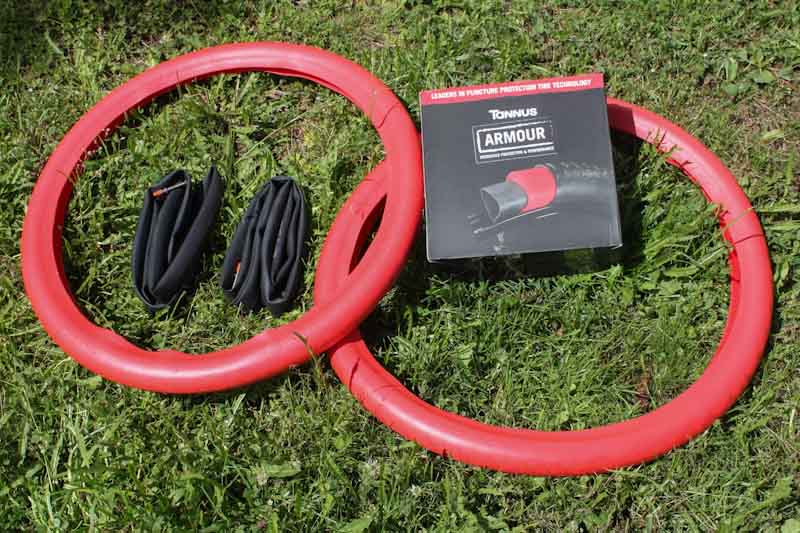Tire inserts are one of the hottest new technologies for cyclists, but Tannus Armour’s unique design includes something many riders now consider outdated – inner tubes. Tannus Armour is a foam-like polymer tire insert that sits between your tube and tire, and claims to offer similar benefits as other inserts on the market, primarily puncture (or burp) resistance, and increased traction with the ability to run very low tire pressures.
After spending a few weeks riding the Tannus Armour, I can say their ability to handle lower pressures definitely offers a lot more traction than you’d get from a tubed wheel. Tannus’ Aither polymer inserts also do an impressive job of softening harsh impacts and absorbing trail vibrations. Having installed them on a 29” trail bike, I did a lot of climbing with them too… and found that there is a sacrifice on the uphills for your improved performance on the downs.
Tannus Armour Installation:
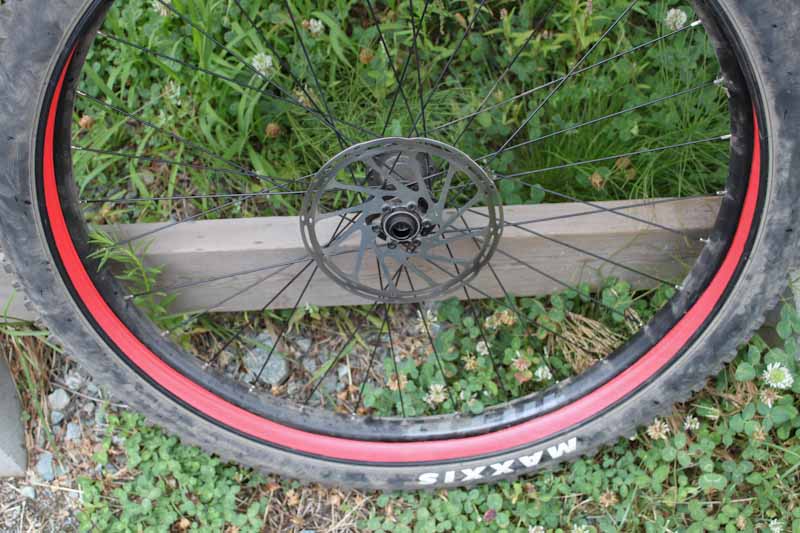 Installation was almost as easy as Tannus claims; they say it only takes 40 extra seconds to install the armour versus a normal tube and tire, and they’re not far off. The only difference between mounting a normal tube/tire and a Tannus-equipped tire is keeping the armour in position as you bead your tire onto the rim, and it’s not hard to do.
Installation was almost as easy as Tannus claims; they say it only takes 40 extra seconds to install the armour versus a normal tube and tire, and they’re not far off. The only difference between mounting a normal tube/tire and a Tannus-equipped tire is keeping the armour in position as you bead your tire onto the rim, and it’s not hard to do.
The only thing I found odd when installing the armour is that it seems smaller in diameter than you’d expect. When you put a slightly inflated tube inside, the tube kinks a little and takes a bit of massaging to get it sitting flush all around. Then, when you’re seating the tire onto the rim, you have to slightly stretch the armour to stuff it into the tire. Once it was in place, I had no problems mounting and beading the tire.
The sides of the Tannus Armour wrap around and sit inside the rim, and for narrower rims/tires you have to trim a thin ring off their sidewalls. I was running 29×2.6” tires, so I didn’t have to do any trimming. The inserts I tested are sized for up to 2.5” tires, but I had no issues using them with the slightly bigger size. One thing to note is Tannus recommends running narrower than normal tubes in their inserts so you’ll probably have to buy a pair of tubes to install them (check out their sizing chart online).
Ride Impressions:
After reading that Tannus has a sponsored downhill rider running just 12psi in his tires, I decided to start out conservatively with 18psi in mine. This is 4 psi lower than I’d run a tubeless tire, and right away I noticed the ride felt quite different with the Tannus Armour.
I chose a high-speed, rocky trail for my first test lap and the armour’s extra impact absorption was plainly obvious. The Tannus inserts do an excellent job of reducing vibrations as promised, but that’s not all – Each time your wheel meets a big root or a sharp rock, the usual clunk is greatly softened by the armour. This extra cushion helps reduce arm and hand fatigue, as less technical sections become butter-smooth and big hits don’t rattle your bones like they usually do. In addition to protecting against pinch-flats, the inserts provide 13-15mm of puncture protection on top, and an extra 2mm in the sidewalls.
I was pleased that I didn’t feel any degree of rebound from the inserts. Where tubed wheels at higher pressures can feel bouncy in rough terrain, the Tannus-equipped wheels felt just as planted and pliable as a tubeless setup (even more so at lower pressures).
Climbing at 18psi wasn’t hugely different versus a tubeless setup. I was getting awesome traction at this pressure, and rolling resistance was OK. I did notice a little extra weight in my wheels, and while Tannus claims 320g for the 29×2.5″ inserts, they showed at 337g apiece on my scale.
As the testing went on, I let the tubes fall to lower pressures. As I dropped to 16, then 15, then 14psi, I felt the ride change quite a bit. I think every rider who tries out Tannus Armour will find their own sweet spot with tire pressures, as how low you go depends on where your priorities lie.
I’m not sure how much the Tannus Armour helps with rolling resistance, as they claim. I can see how supporting the tire from inside would theoretically help it roll, but even at 18psi I mostly just felt like my wheels had gained a bit of weight. Climbing traction was excellent with the lower pressure, but not drastically better than a tubeless setup.
As I dropped to 15 and then 14psi, it was apparent that the inserts weren’t making up for the loss of rolling resistance created by the super low pressure. Adding weight and lowering tire pressure isn’t the best recipe for uphill performance, and unsurprisingly the lower the tires got the slower they felt on the climbs.
When downhill riding, as the tires got lower in pressure the traction only improved. I never had any issues with side roll while cornering, which was a bit surprising as these inserts don’t flare out against the inside of a tire like Cush Cores do. I didn’t feel like they increased sidewall stiffness, but they definitely discourage side roll even at really low pressures.
Once I hit 15psi the tires started feeling pretty squirmy on rough trails. With so little air in them, your tires feel different as they conform around roots and rocks. It’s tough to describe, but it’s not the same as a tubeless setup… the Tannus-equipped tires feel like they’re squishing and moving around more. Until you get used to the feel, it’s hard not to worry about your tires! At 14psi, I stopped twice coming down a trail to check if there was still air in my rear… and it was fine. Due to the difference in feel and the fact that I was climbing for every ride, this was the lowest I went with pressures. It’s not the lower limit by any means: Tannus’ website says some riders are running as little as 10psi.
This different ride feel isn’t necessarily a negative, it’s just something you’ll have to adjust to. While I did worry about the soft feeling tires more than once, I still charged every trail as hard as possible during my testing. I never managed to pinch a tube or roll a tire off a rim, never got a puncture, and the increased traction inspired me to push my speed limits on everything from flow lines to rock slabs. While Tannus doesn’t make big claims about their inserts protecting rims, the wheels I rode still looked brand new and ran perfectly true after my best efforts to thump them around.
So who is the ideal customer for Tannus Armour? Well, if you’ve converted to tubeless and you’re happy with it, you’re probably out of the equation. The fact that Tannus requires you to run tubes, inserts and tires is not going to appeal to weight-conscious riders, and if you spend a lot of time climbing you probably don’t want to weigh down your wheels or run super low tire pressures.
However, if you’re a gravity-focused DH or enduro rider who beats up wheels and loves charging rough terrain, Tannus Armour might be for you. The inserts significantly help with absorbing vibrations and big impacts, greatly enhance traction versus a tubed wheel, and nearly eliminate the chance of pinch-flatting. As a final note, I think Tannus was smart to offer 26” inserts, as they would make a great upgrade for an older DH or park bike.
Tannus Armour’s MTB inserts retail for $40 each in 26”, 27.5” and 29” sizes.
